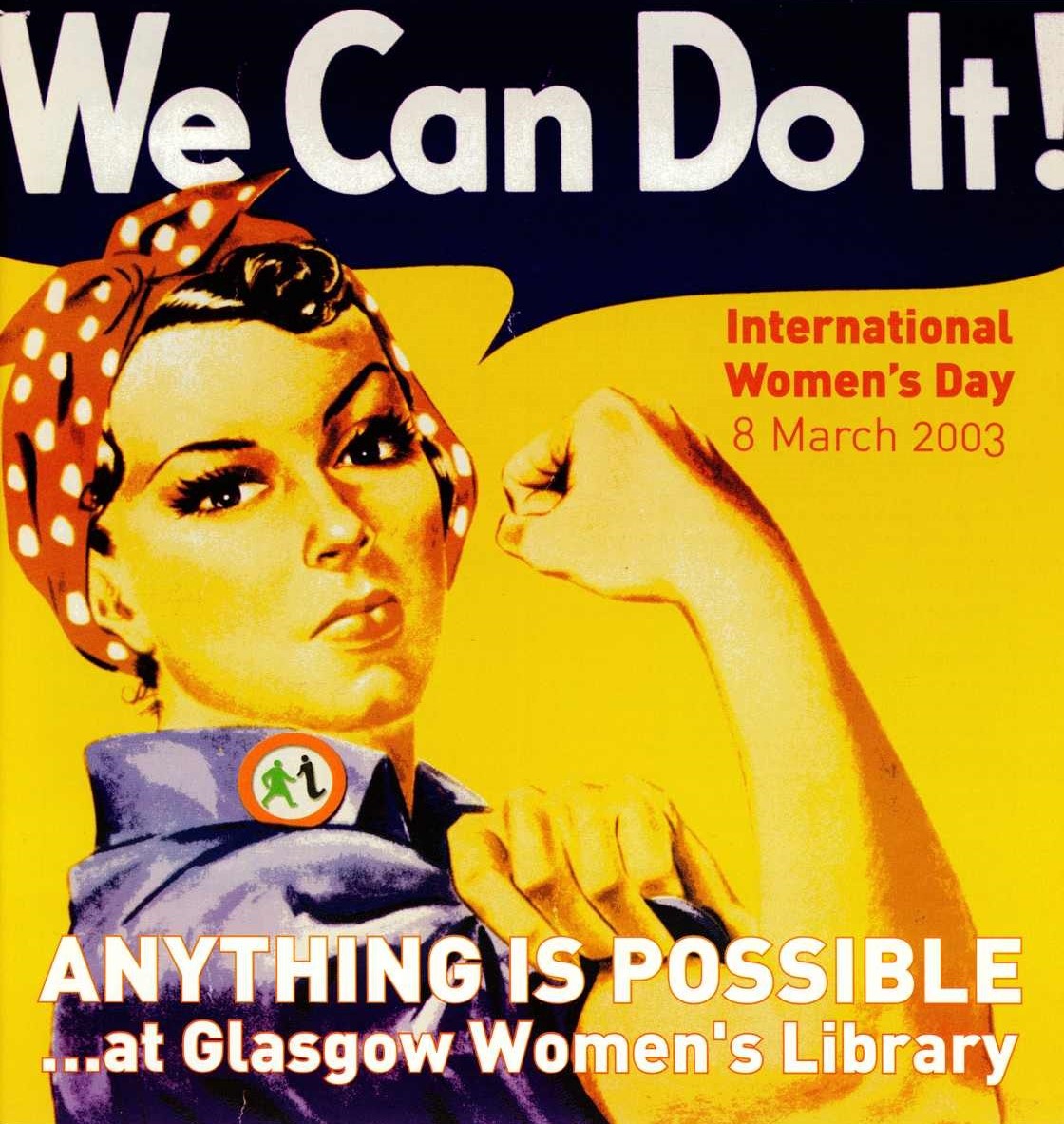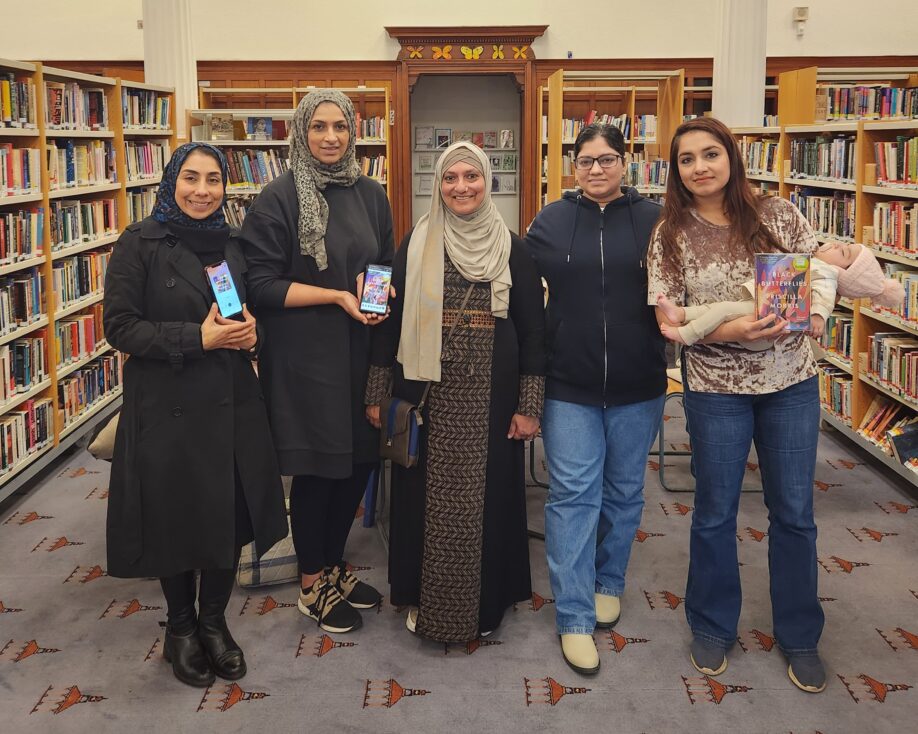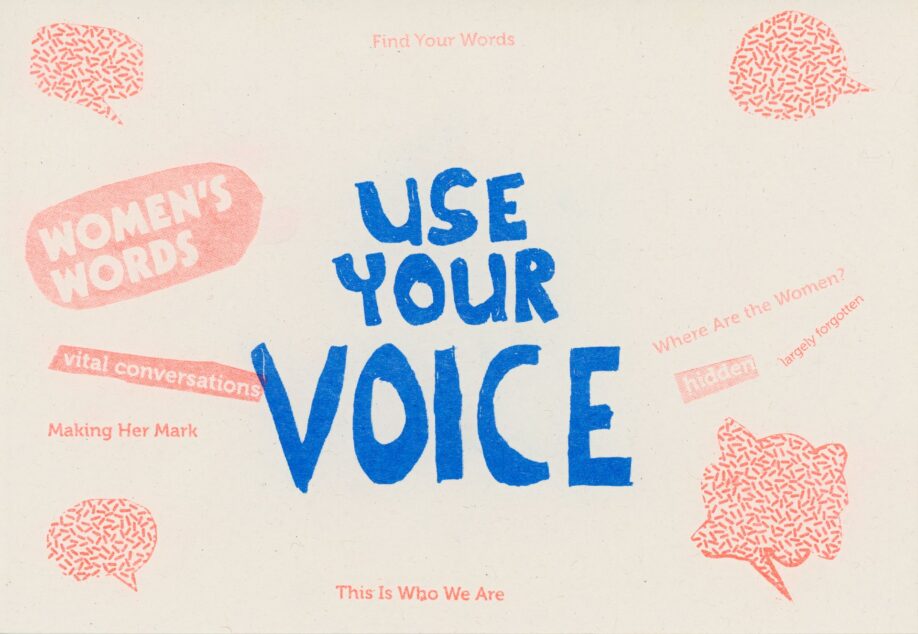Interview conducted by Camilla Nordgren, an MA student of Contemporary Arts who is on placement at GWL until May 2016.
Camilla: What drew you into the Library?
Una: I first got involved with the Library’s Young Critics group because I was looking for something creative to do outside of university. I found the whole concept of the Glasgow Women’s Library really interesting and I thought that the work that they do was really important. When the Young Critics group ended [for the year] I was definitely interested in continuing to volunteer with the Library, so when I got an email from Gabrielle about joining the Ripples on the Pond group I thought it sounded like a great new challenging opportunity to do something that I’d never done before.
C: Why did you want to work with the Ripples on the Pond group?
U: As a History of Art student, I thought the opportunity to acquire an insight into how museums function and the work that goes into putting up an exhibition was really interesting. I was excited about being able to not only work with the Library, but also with artists, as well as getting the chance to learn more about Glasgow’s history and its art community. Being unsure about what I want to do after university I thought this was an incredible opportunity to not only experience something new within the field I want work in later on, but also to be able to learn new skills such as filming, editing and interviewing.
C: How was working with the group?
One of the things I really love about the Glasgow Women’s Library is that, regardless of which group I have worked with there has always been a welcoming atmosphere and a warm attitude. It shouldn’t be surprising that it is like that, but I think it is rare to find a place that is genuinely nice and welcoming every single time you come in. So with the Ripples on the Pond group, even though we all had various levels of experience, it was a nice environment because instead of feeling intimidated you were always met with a sense of support. As all the women in the group brought something different, we were all lending a hand and learning from each other. As well, because we are all volunteers, the work really came from a place of wanting to help, and with that I feel there came a nice sense of evenness, that we were all the same and no one was doing a worse or better job. It was just a really nice atmosphere, and I thought it was great that we were all women from different age groups and different backgrounds. Being at university I mostly associate myself with people who are my age so it was nice to be able to interact with people who are older than me and to realise that I could hold my own and have a mutual back and forth where my opinions and thoughts are appreciated and taken into account.
C: What did you think about the Gallery of Modern Art and the Ripples on the Pond exhibition?
U: I thought the exhibition was really great, and I thought that it was incredible that we had the opportunity to have the curator Katie Bruce talk to us and show us around. It was great being able to hear more about the stories behind the works, and to be able to hear about the different connections that exist between the different artists. It was great to be able to acquire a deeper insight into the works, and to really understand the thoughts and ideas that went behind the exhibition. I also really loved that Katie had an interactive table in the middle of the exhibition because I am a big fan of being able to physically touch and interact with pieces at a more personal level. I think this interaction made my connection with the exhibition so much deeper and personal rather than just purely aesthetic.
C: What artist film did you take a lead on and why did that artist’s work inspire you?
U: Me and Mel took a joint lead on Jacki Parry’s and Shauna McMullan’s film interviews. Jacki Parry’s piece is called Women in the City and Shauna McMullan’s is 165 Stars. For me, these were the works I connected most to, but it was Shauna McMullan’s 165 Stars which I particularly liked. At first my reaction to the work was purely an aesthetic one, but when I learnt more about how the piece came about and the process that went into making it, I became even more intrigued. I thought it was incredibly interesting and cool how Shauna took something which to most people is seen as being insignificant, as just a random doodle in an old book, and actually made that into the focus of something new. I loved that she made something new and beautiful out of something which most of us would bypass as meaningless. I also liked that when we were interviewing Shauna she brought up the fact that she wanted to highlight the connection that exists between the Glasgow community and the Glasgow Women’s Library collection, and that is why she used the asterix and marks she found in the books in the Library to create a whole new constellation. I thought she highlighted this connection in a really interesting and beautiful way.
C: Has your view of arts and culture changed since getting involved with the Library, and Ripples on the Pond group specifically?
U: Having grown up in London which is a cultural hub, and being an Art History student I have had a long-term interest in art and culture, but since coming to university here in Glasgow I have come to realise how exclusive and inaccessible the arts in London can be and how difficult it can be to get involved with the art world there. I find it very cool how through the Library I have had the opportunity to meet and interact with some incredible women, and have been able to realise that artists are just regular people. That the art world is not this elusive, distant thing, but rather something accessible and made up of people just like us. I think it has been great to realise that there is a generosity and genuine interest in the Library and in GoMA to get people excited and interested in the arts, and to see how these people are donating their time and effort in order to do this.
C: What do you want people to take from the films?
U: First and foremost, I hope people are able to engage with the works in a more personal level. I know that for me all the information that I received about the works and the artists allowed me to connect to the exhibition in a more personal level, so I hope that these films have the same effect on other people. As well as giving people more access to the artists’ works, I hope people take away the fact that these movies were made by volunteers and not film-makers, and our main priority was to give people a much fuller understanding of the works and to inspire people to start thinking about why these artists made the works that they made, and to think about the ideas behind these works. I also hope that these movies show that just as artists have personal reactions to pieces, it is okay for viewers to do the same. That there is no wrong or right opinion when it comes to art and art exhibitions and it is okay to form your own opinion about the arts.





